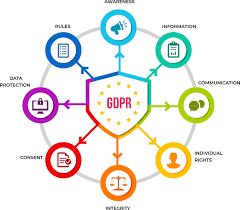
Trusted Cybersecurity Services. World-Class Training. Real-World Impact.
GDPR

Enhanced data security through mandated technical measures like encryption and access controls, reducing the risk of data breaches.

Data Protection Impact Assessment (DPIA) Conduct DPIAs for high-risk data processing to identify and mitigate privacy risks.
Implement encryption for data at rest and in transit, ensuring secure communication and storage.
Establish a system to report data breaches to authorities within 72 hours and notify affected individuals directly.
Appoint a DPO to oversee GDPR compliance, conduct audits, and liaise with authorities (mandatory for large-scale or sensitive data processing).
Develop clear, accessible privacy policies outlining data collection, processing, and user rights.
Conduct DPIAs for high-risk data processing to identify and mitigate privacy risks.
Conduct DPIAs for high-risk data processing to identify and mitigate privacy risks.
Establish a system to report data breaches to authorities within 72 hours and notify affected individuals directly.
Appoint a DPO to oversee GDPR compliance, conduct audits, and liaise with authorities (mandatory for large-scale or sensitive data processing).
Develop clear, accessible privacy policies outlining data collection, processing, and user rights.
Implement mechanisms to obtain, record, and manage user consent for data processing, ensuring it is freely given, specific, and revocable.